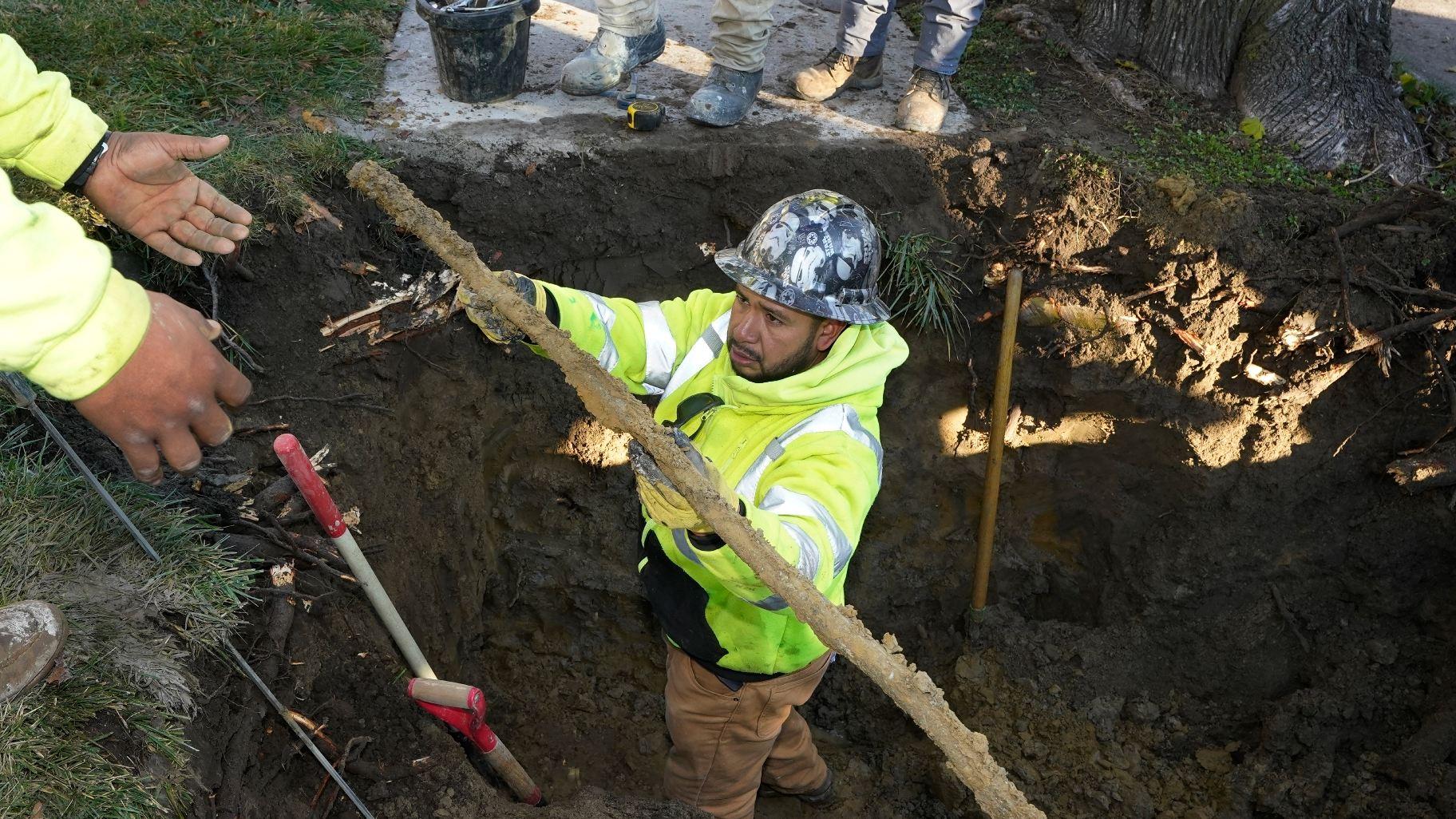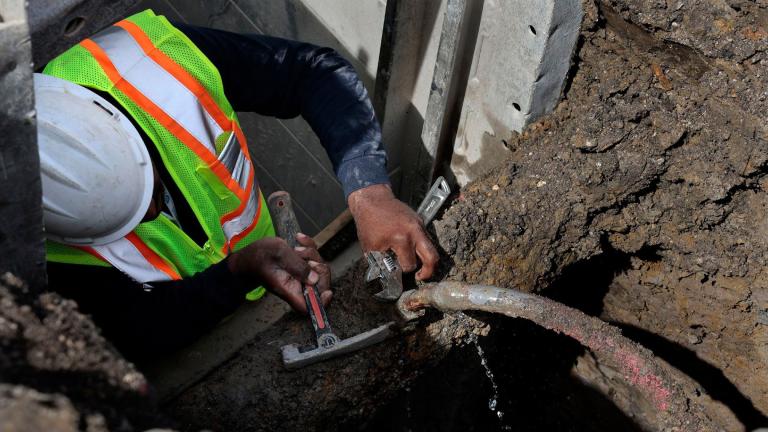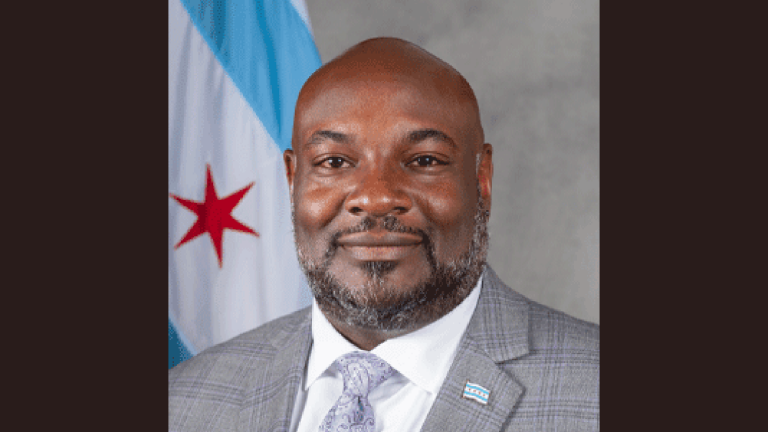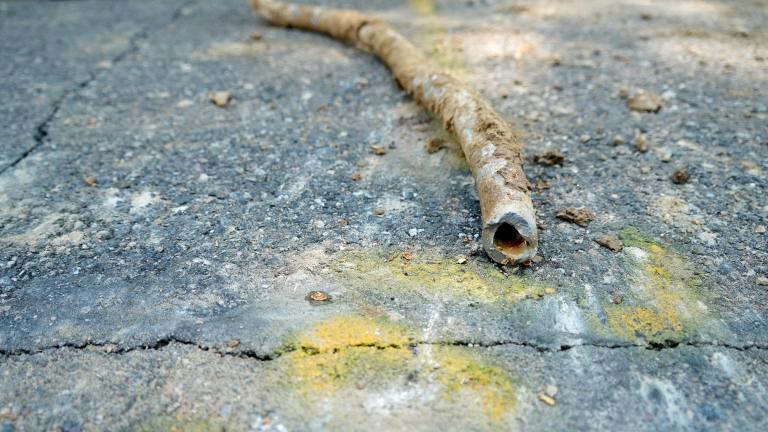 A cut lead pipe is pulled from a dig site for testing at a home in Royal Oak, Mich., on Nov. 16, 2021. The Environmental Protection Agency will soon strengthen lead in drinking water regulations. (AP Photo / Carlos Osorio, File)
A cut lead pipe is pulled from a dig site for testing at a home in Royal Oak, Mich., on Nov. 16, 2021. The Environmental Protection Agency will soon strengthen lead in drinking water regulations. (AP Photo / Carlos Osorio, File)
About four decades ago, when the Environmental Protection Agency was first trying to figure out what to do about lead in drinking water, Ronnie Levin quantified its damage: Roughly 40 million people drank water with dangerous levels of lead, degrading the intelligence of thousands of kids.
But new regulations were going to be costly and complicated. So, “instead of trying to deal with it substantively, they just tabled it,” Levin, a former EPA researcher, said of some of her colleagues at the agency in the 1980s.
Levin’s analysis then was leaked to the press, igniting a public outcry that pressured the EPA to act. And the rules it issued back then have stayed in place, with only modest changes, ever since.
Now, the EPA is on the eve of strengthening them.
Decades after officials banned lead in gasoline for new cars and stopped the sale of lead paint — huge steps toward eliminating significant sources of lead exposure to the public — there are still an estimated 500,000 U.S. children with levels of lead in their blood that are considered high, and experts say lead in drinking water is an important source.
Now the agency is aiming to further reduce lead levels in drinking water and tighten a rule that failed to prevent recent drinking water crises in cities like Flint, Michigan, and Newark, New Jersey. Although the specifics aren't public, the agency says it will propose requiring that utilities actively replace harmful lead pipes.
President Joe Biden has already called for eliminating the country’s estimated 9.2 million lead pipes, lines that connect water mains under the street to homes and businesses and are responsible for most of the lead that seeps into drinking water.
But it’s costly to send out workers to dig up the pipe, lay new ones and replant damaged landscaping. In many cities, homeowners are expected to pay to deal with the pipe on their property.
“Across the population, this has huge effects,” said Levin, who now teaches at Harvard University’s school of public health.
Kids are especially sensitive to lead exposure and high doses significantly reduce intelligence, impair coordination and disrupt a student’s ability to focus and learn. Behavior can deteriorate. Federal officials say there is no safe level of lead for children, and even small amounts can reduce IQ scores.
The updated rules will arrive as the federal government attacks lead on several fronts, with announcements about the dangers in aviation fuel and proposed stricter limits on dust from lead-based paint in older homes and child-care facilities.
Some officials remain more focused on sources like paint dust, but attention to the danger in water grew after Flint.
Decades of work have drastically reduced childhood blood lead levels in the U.S. But many kids are still being exposed to the toxic metal “and the expectation is that a fair amount of that is from lead in water," said Dr.
Aaron Bernstein, a Boston-based pediatrician who this year became the head of the Centers for Disease Control and Prevention’s environmental health programs.
Bernstein said he is hopeful “that as we remove lead pipes, we’re going to see the numbers continue to fall. And that will be really wonderful.”
A FIRST TRY
Lead is a nightmare to regulate because unlike other water contaminants it enters drinking water through pipes and plumbing fixtures after the water leaves the treatment plant. It also can vary widely — a family consuming dangerous amounts of lead may live next door to a house with none at all.
After Levin’s analysis was leaked in 1986, she said the EPA distributed her work to members of Congress.
Water utilities were alarmed by the prospect of new requirements. “Everyone went nuts,” she said.
Levin was part of a contingent of officials known as the “lead mafia.” The group pushed for strong lead regulations, arguing that many people would benefit, so even small health improvements were worthwhile.
Others at EPA believed Levin’s analysis exaggerated the benefits of new regulations and some CDC officials argued that focusing on drinking water would take away from the fight against lead paint, according to a book about the science at EPA by Mark Powell.
Finally in 1991, EPA completed its lead rule.
But “it was a tough fight within EPA,” Levin remembers.
The agency did not force utilities to eliminate lead in drinking water, but instead required them to test for lead in homes and add anti-corrosive chemicals.
It set an action level of 15 parts of lead per billion parts water, but allowed 10% of samples to be above that threshold. Utilities that exceed the action level could be forced to replace lead pipes.
THE WASHINGTON CRISIS
The Flint disaster had the biggest impact in making the threat of lead in drinking water real for public health officials, experts say. Thousands of children were exposed to drinking water with high levels, triggering an emergency, lawsuits, and prolonged national media and legislative attention.
But it was actually a lead crisis in Washington, D.C., about a decade earlier that first shattered public trust.
The EPA rule had required utilities to measure tap water for lead in homes and notify the public if too many results are high. That notification requirement should have been triggered in 2001 in Washington, but the local utility hid some results from the EPA, making the city appear to be in compliance when it was not.
The next year, officials sent out a 12-page brochure, burying news of the problem at the bottom of page 3, after boasting that the utility “delivers safe drinking water that meets or surpasses EPA requirements,” according to a law firm’s investigation years later.
Not until early 2004 did D.C residents find out, through a news story, that a crisis had been unfolding for years.
Two-thirds of recently tested homes had lead concentrations above EPA’s 15 parts per billion threshold. That included more than 2,000 with results multiple times higher than 15 parts per billion and 157 homes at least 20 times above the threshold.
“The Washington, D.C., lead-in-water crisis was far more severe than Flint in every respect,” said Yanna Lambrinidou, a medical anthropologist at Virginia Tech and co-founder of the Campaign for Lead Free Water. At the time, she said, there was a false mantra that lead in drinking water wasn’t that harmful compared to other sources like paint and could be ignored.
The CDC made matters worse, she said, when it published a March 2004 dispatch that said high levels of lead in drinking water in Washington did not significantly increase blood lead levels in young children.
CDC was criticized for downplaying the problem. Agency officials later argued much of the furor stemmed from misinterpretation. “I never said there was no problem,” said the report’s main author, Mary Jean Brown, who was chief of the CDC’s Childhood Lead Poisoning Prevention Branch at the time.
But years later, a House oversight committee report would say that the CDC left out critical data and used testing methods on kids that muddied the link between blood lead levels and lead in drinking water. In fact, blood lead levels in young D.C. children substantially increased during the drinking water crisis, according to later work by Virginia Tech lead expert Marc Edwards.
“CDC’s work was used in other cities with elevated water lead levels to dampen citizen concerns,” the congressional report said.
Then when Washington, D.C., tried to dig out its lead pipes, it left the portion of the pipe that ran under homeowners' properties in the ground, a practice that can spike lead levels.
Now the city has replaced thousands of lead pipes, handed out filters and improved monitoring. The city's lead levels are well below the EPA's action level.
But D.C. wouldn't be the last crisis.
PROBLEMS PERSIST
Before the Flint crisis erupted in 2014, lead had faded as a public health priority, "as if we had finished the lead problem in this country," the CDC's Bernstein said. But Flint brought renewed attention to the problem, and new investment in lead poisoning prevention, he said.
Other crises erupted in 2016 in Newark, New Jersey, and in 2018 in Benton Harbor, Michigan.
Joe Cotruvo, a former director of the Drinking Water Standards Division at EPA, said the existing regulations work and should be credited with significantly reducing lead in drinking water, they just aren’t properly enforced.
Others disagree. Current rules do a bad job of monitoring for lead and cities haven’t done enough to push lead levels as far down as possible, said Michael Schock, a recently retired EPA chemist who worked on lead for decades.
“The public health implication is that there was a lot of lead exposures that would have been somewhat preventable” if utilities had been forced to do more, Schock said. Too many people at EPA still don’t want to significantly tighten standards, Schock said.
Take Newark’s crisis. Because of its history of low lead levels, only small numbers of tests were required every three years. Officials would have been more likely to catch rising lead levels sooner if they had sampled more sites, more often, according to a 2022 journal article.
Newark and Benton Harbor eventually received a more energetic official response. Lead pipes in both cities were rapidly removed and lead levels dropped.
But the events took a heavy toll. Residents in Benton Harbor, where more than 40% live in poverty, idled their cars at water distribution sites waiting for them to open, worried that free supplies would run out. Parents, facing horrible headlines about lead’s ability to damage the brain, worried whether their kid’s future had been stunted.
Levin said removing pipes and beginning to address lead-leaching plumbing in homes will cost money.
“But, you know, we’ve been diddling around for 30 years,” Levin said.








